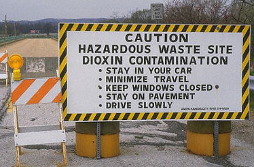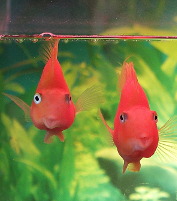 The consumption of chlorine changes HDL ("good") cholesterol into LDL cholesterol, creates oxidative damage throughout a body, acts as an immunosuppressant, causes severe arterial damage, and it destroys the fatty acids that are needed for heart health. Chlorine exposure is even one of the main causes of respiratory illnesses in wintertime, for people use humidifiers, which release chlorine gas whenever they are filled with chlorinated water. Showering in chlorinated water similarly releases the gas, and this is strongly tied to asthma.
The consumption of chlorine changes HDL ("good") cholesterol into LDL cholesterol, creates oxidative damage throughout a body, acts as an immunosuppressant, causes severe arterial damage, and it destroys the fatty acids that are needed for heart health. Chlorine exposure is even one of the main causes of respiratory illnesses in wintertime, for people use humidifiers, which release chlorine gas whenever they are filled with chlorinated water. Showering in chlorinated water similarly releases the gas, and this is strongly tied to asthma.
Nevertheless, chlorine remains the standard chemical that is used to sterilize water supplies throughout the world. It is toxic to every living thing. It truly is effective at killing the bacteria and microscopic parasites that live inside water, but it is likewise destructive to human health. Societies throughout the world have paid an incredible price in carnage for having chlorine-sterilized water. While the 'purification' of water by chlorine has prevented large-scale outbreaks of diseases such as cholera, it has also largely caused our current epidemics of heart disease and cancer, to name a couple.
The real difference of consequence is that we are now dying torturous deaths over a span of decades from poisoning, instead of having much quicker deaths from pathogens. While this may seem like an accomplishment upon a cursory inspection, it is worth considering that most people survived the bacterially-laden water of yesteryear without long-term consequences, but virtually nobody escapes the ravages of chlorine in the present. Chlorine first causes extreme oxidative damage, then it depletes oxygen from the body to cause acidosis, which induces cancers. The arteries are typically in a terrible condition by that time, from the same inflammatory causes.
According to the book, Coronaries Cholesterol Chlorine by Dr. Joseph M. Price, the chlorination problem was first discovered in American soldiers who were participating in the Korean civil war of the 1950's. The effected soldiers had been issued chlorine tablets to 'purify' the water inside their canteens. It was noticed that the twenty-something soldiers were developing severe cardiovascular diseases at an astonishing rate, which tended to mimic the arterial conditions of their grandparents. More of these American soldiers died from heart disease in their thirties and forties than from the bullets of Korean communists.
Avoidance is always the best policy concerning chemicals, but avoidance is not the only solution to the problems of chlorine exposure. Chlorine can be neutralized with vitamin C before it enters a body, or even after it has been consumed. Vitamin C (ascorbic acid or sodium ascorbate) chemically destroys chlorine. The reverse is equally true. Chlorine also destroys vitamin C. Whichever is consumed in a sufficient amount wins. Most people of the civilized world do not eat enough citrus fruits; and they thereby do not get enough vitamin C in the diets, so chlorine freely wreaks havoc throughout the Western world as a result. Furthermore, since chlorine depletes vitamin C within the body, it should be effortless to deduce the devastating health effects of chlorine, which is in effect, an anti-vitamin C chemical. Fortunately, it takes a minuscule amount of vitamin C to neutralize the chlorine that is found in our water.
 Whenever chlorine is neutralized industrially, it is usually harsh, sulfur-based chemicals that are used for this purpose, which lower the oxygen content of the water, and these chemicals are themselves somewhat toxic. The United States Department of Agriculture and Forest Service sought a non-toxic replacement for such chemicals in 2005, for use whenever factories must dispose of their chlorinated water. If the industrially chlorinated wastewater were dumped into septic systems, it would kill the beneficial bacteria; whereas it would kill the fish and plants if it were spewed into lakes and streams. Therefore, the chlorine is required to be neutralized first.
Whenever chlorine is neutralized industrially, it is usually harsh, sulfur-based chemicals that are used for this purpose, which lower the oxygen content of the water, and these chemicals are themselves somewhat toxic. The United States Department of Agriculture and Forest Service sought a non-toxic replacement for such chemicals in 2005, for use whenever factories must dispose of their chlorinated water. If the industrially chlorinated wastewater were dumped into septic systems, it would kill the beneficial bacteria; whereas it would kill the fish and plants if it were spewed into lakes and streams. Therefore, the chlorine is required to be neutralized first.
In April of 2005, the U.S.D.A. Forest Service studied the effects of the two forms of vitamin C (ascorbic acid and sodium ascorbate) on chlorine. The group, led by Brenda Land, a sanitary engineer, found that both forms are extremely effective in neutralizing chlorine, and of course, neither form of vitamin C is toxic to marine life. They published their report titled, "Using Vitamin C To Neutralize Chlorine in Water Systems", for the benefit of wastewater operators. It chronicled that just a single gram of vitamin C neutralizes the chlorine from 100 gallons of water that has been chlorinated at a concentration of 1 P.P.M, which is the standard concentration for drinking water in the United States. While most municipal water in the U.S. contains about 1 P.P.M. of chlorine, it may legally contain up to 4 P.P.M. For reference, the average bathtub has a capacity of 60 gallons at the point of overflowing. Since 1 teaspoon of ascorbic acid weighs about 5 grams, less than a quarter of a teaspoon would be needed to neutralize the chlorine within the hypothetical bathtub. Using 1 full teaspoon would guarantee that all of the chlorine would be quickly neutralized, even if the highest levels of chlorine were present. The reaction is rapid and invisible.
The inclusion of vitamin C is never enough to make municipal water truly safe, because it contains an array of damaging chemicals and metals that are uneffected by vitamin C. Fluoride, pesticides, pharmaceutical drugs, and heavy metals are typical contaminants. Some of the most harmful substances in our water are the THMs (trihalomethanes), which result from chlorine reacting to organic compounds that are already inside the water and our bodies. It is currently unknown as to whether vitamin C has any effect upon already existing THMs, the most notorious of which is chloroform, a potent carcinogen. It is less widely known that the bleaching action of chlorine compounds has a tendency to produce dioxin compounds, as well. The impurities of municipal water and their associated dangers are detailed in our report about tap water.
Whenever chlorinated drinks are the only option, adding a pinch of vitamin C can have a major impact upon reducing its damage and improving taste. Taking a vitamin C supplement 30 minutes prior to drinking a chlorinated beverage can drastically reduce its damage. Therefore, taking vitamin C before going to a restaurant is usually a wise choice. Vitamin C can drastically improve the flavor of soft drinks whenever it is added. We include this because soft drinks are sometimes the only drink option. However, never add vitamin C to soft drinks that contain sodium benzoate, which is the case for most clear soft drinks, because the vitamin C will transform the sodium benzoate into the much more dangerous benzene.
Aquariums and Ponds
| Gallons @ 4 P.P.M. | Vitamin C Weight | Vitamin C Teaspoons |
|---|---|---|
| 1 | 40 mg. | 1/125th |
| 10 | 400 mg. | 1/50th |
| 30 | 1.2 grams | 1/4th |
| 100 | 4 grams | 4/5ths |
| 150 | 6 grams | 1 1/5th |
The suitable amount of vitamin C powder can be visually approximated with a teaspoon, or by simply using vitamin C supplement capsules that have known weights. The most pedantic people can get a pocket scale to facilitate measuring with great precision, but it is not necessary. People may simply use a bit extra if they are uncertain. Having too much vitamin C is not harmful, unless the amount is extreme. Chlorine test strips can be found wherever aquarium supplies are sold.
Common Sources of Chlorine Exposure
- Chlorinated drinking water, including some brands of bottled water
- Soft drinks
- Reconstituted juices ("from concentrate")
- Processed foods
- Bleached flour
- Shower mist
- Skin absorption from showers, baths, and swimming
- Cleaning and bleaching products
- Hand sanitizers
- Insecticides
- Pesticides
- Herbicides
- Fungicides
Related Articles
Sudden Infant Death Syndrome and The Vitamin C Connection
The Big One: Naturally Preventing and Curing Heart Disease
M.M.S. Sellers Prosecuted for Selling Poisonous Bleach as Medicine
The Debate between HealthWyze.org and Jim Humble about whether M.M.S. is a Fraud
